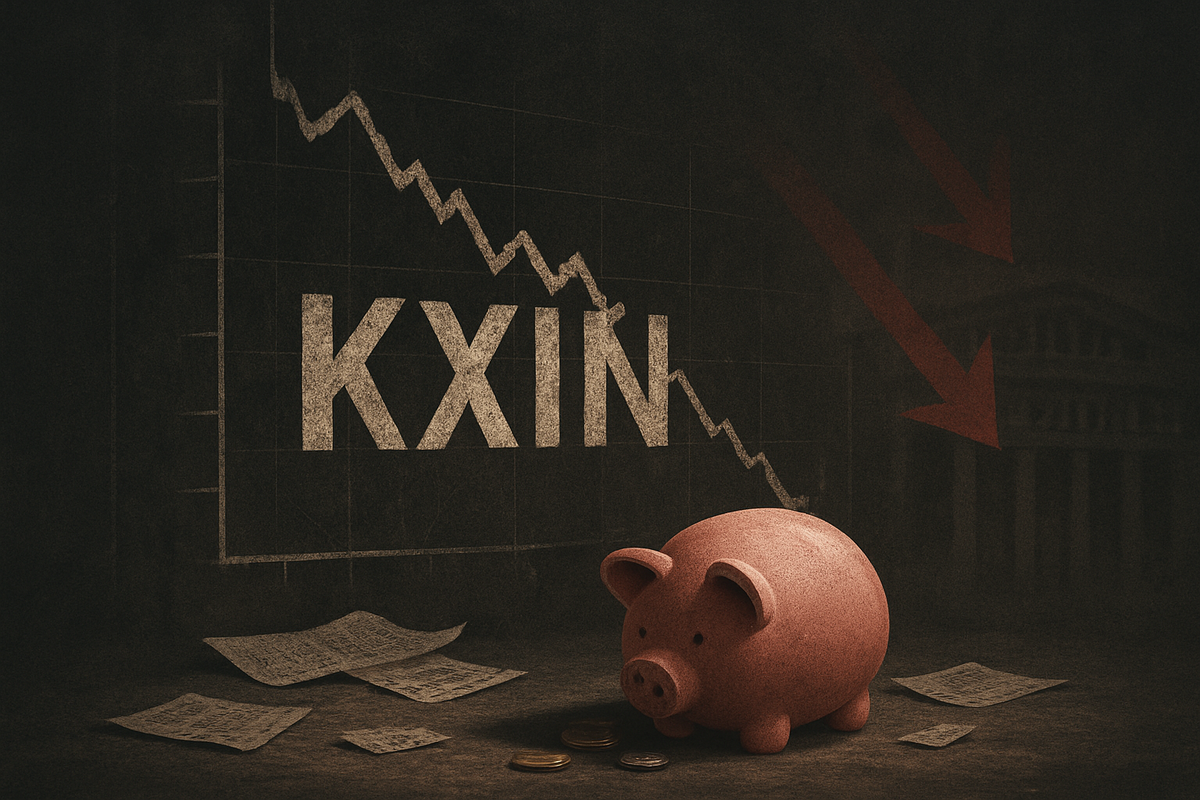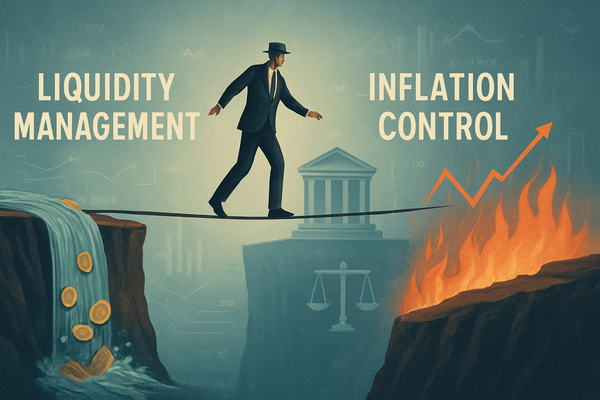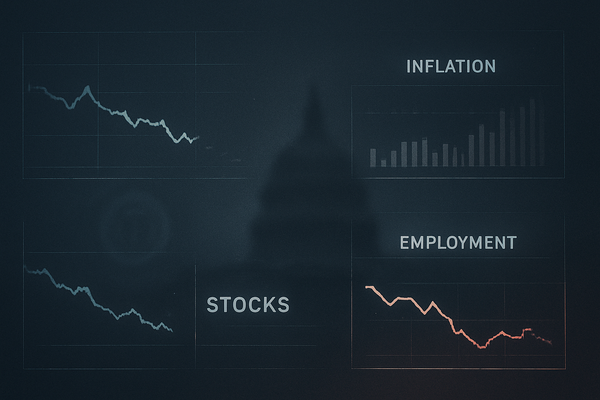Kaixin Holdings (KXIN) Plummets Nearly 40% Amid Deepening Financial Crisis and Delisting Fears

Shanghai, China – Kaixin Holdings (NASDAQ: KXIN), a prominent player in China's used car market, experienced another tumultuous day in trading, with its shares plummeting by nearly 40% in recent sessions. This latest sharp decline is a stark reflection of the company's ongoing and severe financial distress, marked by rapidly declining revenues, significant cash burn, and a persistent threat of delisting from the Nasdaq exchange. For investors, this plunge signals an escalating crisis, underscoring the extreme risks associated with the beleaguered company.
The dramatic fall in share price is not an isolated incident but rather the latest chapter in a prolonged period of underperformance and financial instability for Kaixin Holdings. With its core business facing immense pressure and profitability eroding, the company finds itself at a critical juncture, leaving shareholders grappling with substantial losses and an uncertain future.
A Cascade of Financial Misfortunes
The recent nearly 40% drop in Kaixin Holdings (NASDAQ: KXIN) stock adds to a devastating year for the company, which has seen its shares decline by over 95% over the past 365 days, significantly underperforming the broader market. This precipitous fall is directly attributable to a litany of financial woes that have plagued the company for an extended period. Specific details reveal a business in severe contraction: for the twelve months ending Q2 2024, revenue plummeted by 81.46% to a mere $12.68 million. This downward spiral continued, with the half-year ending June 30, 2025, reporting a staggering 99.50% decrease in revenue, bringing it down to just $95,000. In some recent financial reports, such as those from January 2025, the company even reported zero revenue, alongside a net loss of $5.37 million and an earnings per share (EPS) of -$0.10.
The timeline of Kaixin's descent is equally concerning. The company has consistently failed to meet Nasdaq's minimum bid price requirement of $1 per share, receiving non-compliance notices on February 1, 2024, and again on August 19, 2024, after its bid price fell below $0.10 for ten consecutive trading days. While an extension was granted until January 27, 2025, to regain compliance, the company has appealed this decision, with a hearing scheduled for October 3, 2024, temporarily halting the suspension of trading. The company has also been exploring a reverse stock split as a potential remedy, subject to shareholder approval. Key players involved in this unfolding drama include Kaixin Holdings' management, who are struggling to navigate these severe headwinds, and the Nasdaq exchange, which maintains strict listing standards. Initial market reactions have been characterized by extreme volatility and consistent "sell signals," reflecting deep investor skepticism and a lack of confidence in the company's prospects.
Adding to the dire situation, Kaixin Holdings has reported deeply negative gross profit margins, reaching -182.25% as of February 2025, and negative EBITDA of -$43.05 million. The company is reportedly "quickly burning through cash," with its short-term obligations far exceeding its liquid assets, painting a grim picture of its liquidity and financial sustainability. These factors collectively highlight the profound operational and financial challenges that have driven investors away, leading to the ongoing erosion of shareholder value.
The Ripple Effect: Who Wins and Who Loses?
In this scenario, Kaixin Holdings (NASDAQ: KXIN) unequivocally stands as the primary loser. The company is facing an existential threat, with its core business model seemingly broken, evidenced by the catastrophic decline in revenue, persistent net losses, and critical liquidity issues. The potential delisting from Nasdaq would further cripple its ability to raise capital and significantly reduce its market visibility and investor confidence, making any recovery an even more arduous task. The erosion of shareholder value has been immense, with long-term investors witnessing nearly all their capital wiped out.
For competitors in the used car market, particularly those operating in China, Kaixin's struggles could present an indirect opportunity. As Kaixin retreats or potentially collapses, other established or emerging players might be able to capture its dwindling market share. Companies with stronger financial footing and more robust business models could consolidate their positions. However, the broader economic climate and regulatory landscape in China, particularly concerning tech and automotive sectors, could also pose challenges, meaning that while Kaixin's woes might clear some competitive space, it doesn't guarantee easy gains for others. Specific partners or suppliers that relied heavily on Kaixin Holdings could also face adverse impacts, potentially losing a significant client and experiencing disruptions to their own operations. However, given Kaixin's rapidly shrinking scale, the broader systemic impact on its partners might be limited.
Conversely, investors who have shorted KXIN stock would be the clear beneficiaries of its decline. The severe and consistent downward trend provides a fertile ground for short sellers to profit. However, given the extreme volatility and low price point, even shorting carries substantial risk, as evidenced by occasional short-term price spikes. The overall market sentiment surrounding micro-cap Chinese companies, especially those in sectors facing regulatory scrutiny or intense competition, could also be negatively affected, potentially making it harder for similar companies to attract investment.
Wider Significance and Industry Trends
Kaixin Holdings' (NASDAQ: KXIN) predicament is not merely an isolated corporate failure but also reflects broader industry trends and economic challenges, particularly within China's automotive and technology sectors. The used car market in China, while possessing long-term growth potential, has faced headwinds from intense competition, evolving consumer preferences, and regulatory shifts. Companies that fail to adapt quickly to digital transformation, supply chain disruptions, or changing economic conditions are vulnerable. Kaixin's inability to maintain revenue and profitability suggests a failure to effectively navigate these complex dynamics.
The potential ripple effects extend beyond direct competitors. Investor confidence in smaller, growth-oriented Chinese companies listed on U.S. exchanges could be further eroded. The ongoing scrutiny from U.S. regulators regarding auditing standards for Chinese companies, coupled with the threat of delisting for non-compliance with bid price rules, highlights a challenging environment for many such firms. Kaixin's struggle serves as a cautionary tale, emphasizing the importance of robust financial health and strict adherence to listing requirements. Historically, numerous companies have faced delisting due to similar financial distress or non-compliance, often leading to severe liquidity issues for their shares and substantial losses for investors. This event underscores the rigorous nature of U.S. exchange regulations and the consequences of failing to meet them.
Furthermore, the situation could prompt a re-evaluation of investment strategies focusing on speculative, high-risk micro-cap stocks, especially those with significant operational exposure to volatile markets. The emphasis might shift towards companies with proven profitability, strong balance sheets, and transparent governance, reinforcing a flight to quality. Regulatory bodies, both in the U.S. and China, might observe such high-profile failures as a basis for reviewing existing policies or implementing new safeguards, though direct policy implications from a single company's decline are often limited unless it signals a systemic issue.
What Comes Next for Kaixin Holdings?
The immediate future for Kaixin Holdings (NASDAQ: KXIN) appears fraught with challenges. In the short term, the company's primary focus will be on its appeal against the Nasdaq delisting notice. A successful appeal, while buying more time, would still require a significant and sustained increase in its share price to regain compliance, likely necessitating a reverse stock split. If the appeal fails, or if a reverse stock split doesn't effectively resolve the issue, delisting from Nasdaq becomes a near certainty. This would severely impact the stock's liquidity and could relegate it to over-the-counter (OTC) markets, further depressing its value and making it exceptionally difficult for investors to exit their positions.
In the long term, Kaixin Holdings faces an uphill battle for survival. Strategic pivots are desperately needed, focusing on drastic operational restructuring, cost-cutting measures, and potentially a complete overhaul of its business model to stem the bleeding and reignite revenue growth. Given the current financial state, securing new capital would be incredibly challenging, making any significant turnaround efforts difficult to fund. Market opportunities for Kaixin are scarce; rather, the company faces overwhelming challenges to simply remain a viable entity. Potential scenarios range from continued decline and eventual liquidation or acquisition at a distressed valuation, to a highly improbable but not impossible, dramatic restructuring that somehow restores profitability and investor confidence. The latter would require a monumental effort and a significant shift in market conditions.
The key for Kaixin will be demonstrating a credible path to sustained profitability and compliance with listing rules. Without a clear and convincing strategy, the company's prospects remain grim, and its ability to attract new investment or retain existing shareholders will continue to diminish.
Comprehensive Wrap-up and Investor Outlook
The dramatic decline of Kaixin Holdings (NASDAQ: KXIN), culminating in recent nearly 40% drops and a year-long erosion of over 95% of its value, serves as a stark reminder of the inherent risks in volatile financial markets. The key takeaways from this event are clear: Kaixin is grappling with severe financial distress characterized by catastrophic revenue declines, deeply negative profitability, significant cash burn, and an imminent threat of delisting from Nasdaq. These factors collectively paint a picture of a company in crisis, struggling for survival.
Moving forward, the market will continue to view Kaixin Holdings with extreme caution. The company's future hinges on its ability to successfully appeal the Nasdaq delisting decision and implement a radical operational turnaround that can somehow restore financial health. Without these critical interventions, the outlook remains exceedingly bleak. The lasting impact of this event will be felt most acutely by its shareholders, who have endured substantial losses, and it underscores the importance of thorough due diligence and risk assessment when investing in highly speculative stocks.
Investors should closely watch several key developments in the coming months: the outcome of Kaixin's appeal with the Nasdaq Hearings Panel, any progress on a potential reverse stock split, and crucially, future financial reports that might indicate whether the company can halt its revenue decline and improve its liquidity. Absent any significant positive developments, the path ahead for Kaixin Holdings appears fraught with peril, making it a cautionary tale for the broader market.
This content is intended for informational purposes only and is not financial advice



